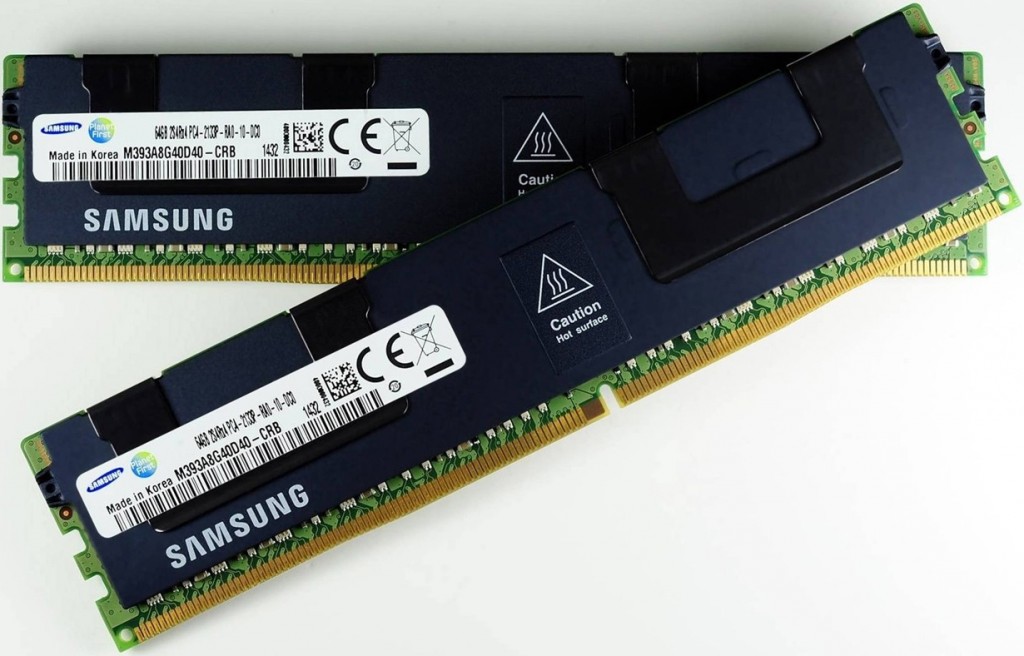Samsung Electronics will lead the market of dynamic random access memory with transition to 20nm fabrication process, a media report citing sources with knowledge of the matter claims. Over half of the company’s DRAM this year will be made using 20nm manufacturing technology.
Demand for higher-performance and higher-density computer memory will increase this calendar year. In a bid to make 4Gb and 8Gb chips with high clock-rates cost-effectively, DRAM producers need to use thin process technologies. 20nm manufacturing tech is currently the most advanced node to produce this type of products. Therefore, manufacturers who can make memory chips using 20nm fabrication process in high volume will be in a more favourable position than producers without such ability.
More than 50 per cent of Samsung’s DRAM output this year will be made using 20nm manufacturing technology, reports DigiTimes. By contrast, Micron Technology and SK Hynix, two other major DRAM manufacturers, will continue to produce the larger part of their DRAM products using 25nm and 28nm processes. The two companies are only starting to use 20nm node, therefore, it will take them some time to ramp up the production.
According to DRAMeXchange, the world’s largest DRAM market tracker, Samsung began volume production using its 20nm and 23nm technologies in the fourth quarter of 2014. Besides, the yield rate and output of DRAM produced using its 25nm process also increased, which significantly boosted profitability of Samsung’s DRAM business last quarter.
SK Hynix, which will ramp up its transition to 20nm manufacturing process this year, also made significant progress with yield rate and capacity of 25nm process in Q3 and Q4 2014, which helped it to keep profit margins high.
Micron began trial production of DRAM on the 20nm process in the Q4 2014 and has plans to process 80 thousand wafers per month using the technology by the end of 2015. This will help the U.S. supplier keep up with the Korean rivals when it comes to profitability, the market tracker claims.
The situation with Nanya, Winbond and PowerChip is not very good because neither of them currently have 20nm process technology and will have to license it from leading manufacturers. Therefore, their profits this year may feel significant pressure.
DRAMeXchange expects the overall value of the global DRAM market to reach $52.3 billion this year, a 13 per cent growth compared to 2014. In Q4 2014 Samsung lead the DRAM market with 41.4 per sent revenue share. SK Hynix followed the leader with 27.7 per cent share and Micron Technology commanded 24 per cent of shipments.
Discuss on our Facebook page, HERE.
KitGuru Says: To catch up with Samsung Electronics, SK Hynix and Micron will have to invest more money in production equipment and fabrication processes. Unfortunately, it is pretty hard to do since the South Korean conglomerate spends more than $10 billion a year on various semiconductor-related activities, according to IC Insights.
 KitGuru KitGuru.net – Tech News | Hardware News | Hardware Reviews | IOS | Mobile | Gaming | Graphics Cards
KitGuru KitGuru.net – Tech News | Hardware News | Hardware Reviews | IOS | Mobile | Gaming | Graphics Cards




RAM manufacturers usually mean 2x nm when they say 20nm or they use the phrase 20nm class so it means between 20 and 29nm.